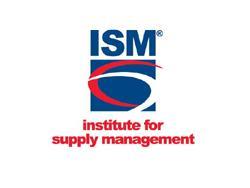Purchasing Managers Index Rose to 60.8% in February
Tempe, AZ, March 22, 2018-The February Purchasing Managers Index registered 60.8%, an increase of 1.7 percentage points from the January reading of 59.1%, according to the Manufacturing ISM Report On Business.
The New Orders Index registered 64.2%, a decrease of 1.2 percentage points from the January reading of 65.4%.
The Production Index registered 62%, a 2.5 percentage point decrease compared to the January reading of 64.5%.
The Employment Index registered 59.7%, an increase of 5.5 percentage points from the January reading of 54.2%.
The Supplier Deliveries Index registered 61.1%, a 2 percentage point increase from the January reading of 59.1%.
The Inventories Index registered 56.7%, an increase of 4.4 percentage points from the January reading of 52.3%.
The Prices Index registered 74.2% in February, a 1.5 percentage point increase from the January reading of 72.7%, indicating higher raw materials prices for the 24th consecutive month.
Comments from the panel reflect expanding business conditions, with new orders and production maintaining high levels of expansion; employment expanding at a faster rate to support production; order backlogs expanding at a faster rate; and export orders and imports continuing to grow faster in February. Supplier deliveries continued to slow (improving) at a faster rate. Price increases occurred across most industry sectors. The Customers’ Inventories Index indicates levels remain too low. Capital expenditure lead times improved by five days while production material supplier lead times extended four days during the month of February.
Of the 18 manufacturing industries, 15 reported growth in February, in the following order: printing & related support activities; primary metals; machinery; computer & electronic products; petroleum & coal products; nonmetallic mineral products; plastics & rubber products; fabricated metal products; chemical products; transportation equipment; textile mills; miscellaneous manufacturing; paper products; electrical equipment, appliances & components; and food, beverage & tobacco products.
Two industries reported contraction during the period: apparel, leather & allied products; and furniture & related products.
